
The Mikoyan-Gurevich MiG-21 is a supersonic jet fighter and interceptor aircraft, designed by the Mikoyan-Gurevich Design Bureau in the Soviet Union. Its nicknames include: "Balalaika", because its planform resembles the stringed musical instrument of the same name; "Ołówek", Polish for "pencil", due to the shape of its fuselage, and "Én Bạc", meaning "silver swallow", in Vietnamese.
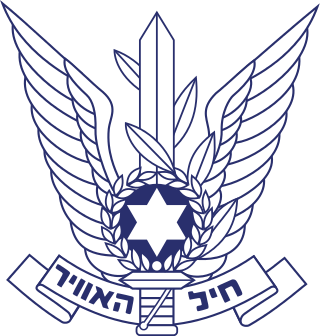
The Israeli Air Force operates as the aerial and space warfare branch of the Israel Defense Forces (IDF). It was founded on May 28, 1948, shortly after the Israeli Declaration of Independence. As of April 2022, Aluf Tomer Bar has been serving as the Air Force commander.

The War of Attrition involved fighting between Israel and Egypt, Jordan, the Palestine Liberation Organisation (PLO) and their allies from 1967 to 1970.

The Egyptian Air Force (EAF) (Egyptian Arabic: القوات الجوية المصرية, romanized: El Qūwāt El Gawīyä El Maṣrīya, Coptic: Ⲛⲉⲛⲡⲉⲧϩⲁⲗⲁⲓⲛⲙⲓϣⲓ ⲛ̀ⲕⲏⲙⲓ), is the aviation branch of the Egyptian Armed Forces that is responsible for all airborne defence missions and operates all military aircraft, including those used in support of the Egyptian Army, Egyptian Navy and the Egyptian Air Defense Forces. The latter was created as a separate command in the 1970s and it coordinates with the Air Force to integrate air and ground-based air defense operations. The EAF is headed by an air marshal (lieutenant general equivalent). Currently, the commander of the Egyptian Air Force is Air Marshal Mahmoud Fouad Abdel-Gawad. The force's motto is 'Higher and higher for the sake of glory' (Arabic: إلى العلا في سبيل المجد, I‘la’ al-'olà fī sabīl al-magd). It was known as the Royal Egyptian Air Force until 18 June 1953 following the declaration of the Republic of Egypt by Muhammad Naguib.
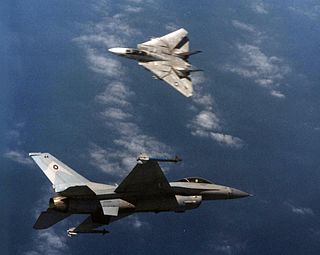
A dogfight, or dog fight, is an aerial battle between fighter aircraft conducted at close range. Modern terminology for air-to-air combat is air combat manoeuvring (ACM), which refers to tactical situations requiring the use of individual basic fighter maneuvers (BFM) to attack or evade one or more opponents. This differs from aerial warfare, which deals with the strategy involved in planning and executing various missions.

Brigadier General Giora "Hawkeye" Epstein, today Giora Even, is a retired Israeli Air Force (IAF) officer and a fighter ace credited with 17 victories, 16 against Egyptian jets and one against an Egyptian Mi-8 helicopter, making Epstein the ace of aces of supersonic fighter jets and of the Israeli Air Force. Epstein was an active IAF pilot from 1961 until May 26, 1997, when he retired at age 59. Like many retired IAF flyers, he later worked as a pilot for El Al Airlines.

The 69 "Hammers" Squadron is an Israeli Air Force squadron operating the F-15I Thunder out of Hatzerim. It was formed in July 1948 to operate three B-17 Flying Fortresses which the fledgling Israeli Air Force had acquired in the United States. The squadron flew the Flying Fortress, an aircraft credited with propelling the IAF into the realm of modern aerial warfare, during both the 1948 Arab–Israeli War and 1956 Suez Crisis. Disbanded in early 1957, 69 Squadron reformed in 1969 to fly the F-4 Phantom II.
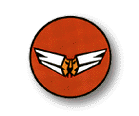
Squadron 107, also known as the "Knights of the Orange Tail Squadron", is a fighter aircraft squadron in the Israeli Air Force. The squadron operates F-16I ("Sufa") aircraft from the Hatzerim Airbase in the Negev.
Operation Boxer was an aerial offensive undertaken by the Israeli Air Force along the Suez Canal in July 1969. The first major IAF operation since the 1967 Six-Day War, the operation signaled a new phase in the War of Attrition.

The Ofira Air Battle was one of the first air battles of the Yom Kippur War. On 6 October 1973, Egypt launched a massive surprise attack on Israel that included over 200 Egyptian aircraft participating in an opening airstrike. The Israeli Air Force (IAF) Base Ofir at Sharm el-Sheikh came under attack by 20 Egyptian Air Force MiG-17s and their eight MiG-21 escorts. Not realizing the extent of the attack, Israel quickly scrambled two F-4E Phantom II fighter jets. The Israeli pilots proceeded to jettison their external fuel tanks and engage all 28 MiGs in aerial combat. In just under six minutes, seven Egyptian MiGs had been shot down and the remaining Egyptian planes disengaged and returned to Egypt. The Israeli Phantoms returned to their base. The Egyptians dispute the Israeli account of the battle, but they never did provide their own version of what happened. One of the Egyptian pilots killed was Egyptian President Anwar Sadat's half-brother, Atef.
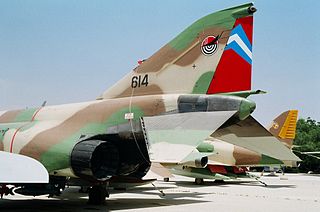
The Priha (Blossom) Operations were a series of strikes undertaken by the Israeli Air Force during the War of Attrition. Taking place between January and April 1970, the operations consisted of 118 sorties against targets in the Egyptian heartland. The strikes were carried out almost exclusively by the F-4 Phantom II, operated at the time only by the 201 "The One" Squadron and the 69 "Hammers" Squadron. Although tactically successful, the operations failed to achieve their objective of pushing the Egyptian government to sue for a ceasefire.
Bir Gifgafa is an airfield in the Sinai, 90 km east of the Suez Canal. During the 1960s and 1970s it played a significant role in Arab–Israeli wars, at different times serving both Egypt and Israel.
Rimon 20 was the code name of an aerial battle in 1970 which pitted the Israeli Air Force directly against Soviet fighter pilots stationed in Egypt during the War of Attrition. Israel planned the dogfight in order to send a message that it would no longer tolerate direct Soviet military involvement in its conflict with Egypt.
The General Dynamics F-16 Fighting Falcon has served the United States and the air arms of 25 other nations. Over 4,400 F-16s have been sold.
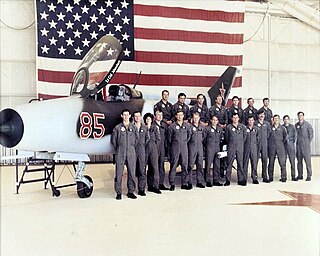
The 4477th Test and Evaluation Squadron was a squadron in the United States Air Force under the claimancy of the Tactical Air Command (TAC). It is currently inactive. The product of Project Constant Peg, the unit was created to expose the tactical air forces to the flight characteristics of fighter aircraft used by the Soviet Union during the Cold War. The declassified history of the squadron shows that it operated MiG-17s, MiG-21s and MiG-23s between 1977 and 1988, but it was not formally disbanded until July 1990.

Giora Romm was an Israeli military officer who served as deputy commander of the Israeli Air Force (IAF), Israel's military attaché in the United States and as director of the Civil Aviation Authority of Israel. Romm was the IAF's first jet ace, scoring five kills during the 1967 Six-Day War. In 1969, during the War of Attrition, Romm was shot down and spent several months in Egyptian captivity. He commanded the IAF's 115 Squadron through the intensive fighting of the 1973 Yom Kippur War and participated in Operation Wooden Leg, the 1985 raid against PLO headquarters in Tunisia.

Amir Nachumi is a retired Israeli Air Force Brigadier General who, in the course of his career, shot down 14 enemy aircraft, making him one of Israel's top flying aces. He scored 7 aerial kills in the F-4 Phantom II during the Yom Kippur War, 7 in the F-16 Fighting Falcon in fighting over Lebanon, and participated in Operation Opera, the 1981 raid that destroyed an Iraqi nuclear reactor.

The History of the Israel Air Force begins in May 1948, shortly after the formation of the State of Israel. Following Israel's declaration of independence on May 14, its pre-state national institutions transformed into the agencies of a state, and on May 26, 1948, the Israeli Air Force was formed. Beginning with a small collection of light aircraft, the force soon transformed into a comprehensive fighting force. It has since participated in several wars and numerous engagements, becoming what has been described as "The mightiest air force in the Middle East".

Ran Goren is a retired fighter pilot and Major General of the IDF, former Deputy Commander of the Air Force and Head of the Manpower Directorate.

Ran Ronen was an Israeli Air Force (IAF) brigadier general and fighter ace credited with seven kills. He commanded various fighter squadrons, the IAF flight academy, and Tel Nof Airbase, retiring from the IAF with the rank of brigadier general. One of his pilots later described him as "the greatest squadron commander ever".















